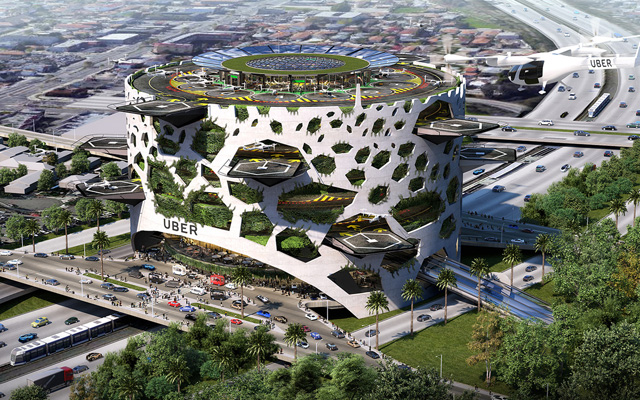
With the fast pace of innovation looking set to massively reshape air travel, industry observers at the recent 2019 ACI Asia-Pacific/World Annual General Assembly, Conference and Exhibition in Hong Kong put forth visions of the future of flying and mull what these could mean for the industry today.
Amy Zalman, CEO of Prescient, a Washington DC-based strategic foresight firm said: “The airport today is a place for airplanes but we have heard about urban mobility and know this is in the near future.

“For instance, UberAir could achieve massive growth using Corgan’s design for a future Skyport which was unveiled at the Uber Elevate Summit last year. It supports vertical take-off and landing so air transport will become more local as they are being built at both airport and urban sites,” she noted.
Citing a train-to-plane technology developed by a French venture, Zalman remarked: “The train can actually be attached to wings so this tethered plane/train will go to a local station down the street, passengers just get on a train and head to the airport. Security would take place inside the train-to-plane so in this scenario there is actually no airport. It’s clear that the version of hybridity is emerging.”
As well, space travel has taken off, with British billionaire entrepreneur Richard Branson having partnered with an airport in southern Italy to build a space port, she continued.
Meanwhile, Vancouver International Airport’s vice president of planning and innovation, Steve Hankinson, said the airport has built a lab, which among other roles, serves to demonstrate the future of identity management.
He explained: “We provided illustrations for those who write regulations that create future policy, and helped (demonstrate) them against actual use cases. We hosted daily senior government officials/regulators from the US and Canada.”
Citing an example of how relevant policies could enable and accelerate change, he shared that the airport will begin the use of biometrics in June.
Changi Airport’s chief information officer and group senior vice president, Steve Lee, also foresees big changes in passenger facilitation over the next 10 years, with biometrics and smart identity playing major roles.
“I talked to some aero guys who showed me a (model of a) real-time airport with adaptive systems, which promotes going beyond sitting still in the present infrastructure. They get into the operation business in real time; that’s how we stretch capacity and deal with needs and complexity that comes with modern airports.
He added: “AI is key, some projects use AI and data science to put in a bag (intelligent luggage) to detect and predict baggage handling system failure. The big deal is how you get that into the whole operation system to change the way we operate the airport. Chatbot continues to involve our relationship with customers and robotics will take a big role.”
For Arup, which works on performance improvement, one of the major projects is undertaken with Changi Airport, with the two working to install and design technology in a 20-year time frame.
Advanced digital engineering director, Alan Newbold said: “The real challenge is capacity and how to optimise and build an increased capacity. A real-time digital airport provides data-driven business solution to these challenges. The overall concept is that airport operation could be run using a large percentage of automation and data driven methods. It allows you to focus on disruptive events and things that happen out of the norm. It also provide high value customer service.”
Data is also key, but to wield it effectively requires a focus on analytics as well as collaboration. “Today people hold on to data as a commodity as something that you can trade. I suspect in the near future, there will be so much data out there that the value will be in the analytics and the insight derived from that data, not from the data itself. We need to work together within our industry and equally learn from other industry on what is the best practice we can bring in.”
Newbold further urges for the industry to take advantage of the intersection of machine learning and artificial intelligence, and expressed excitement over the industry applications of 5G.



















